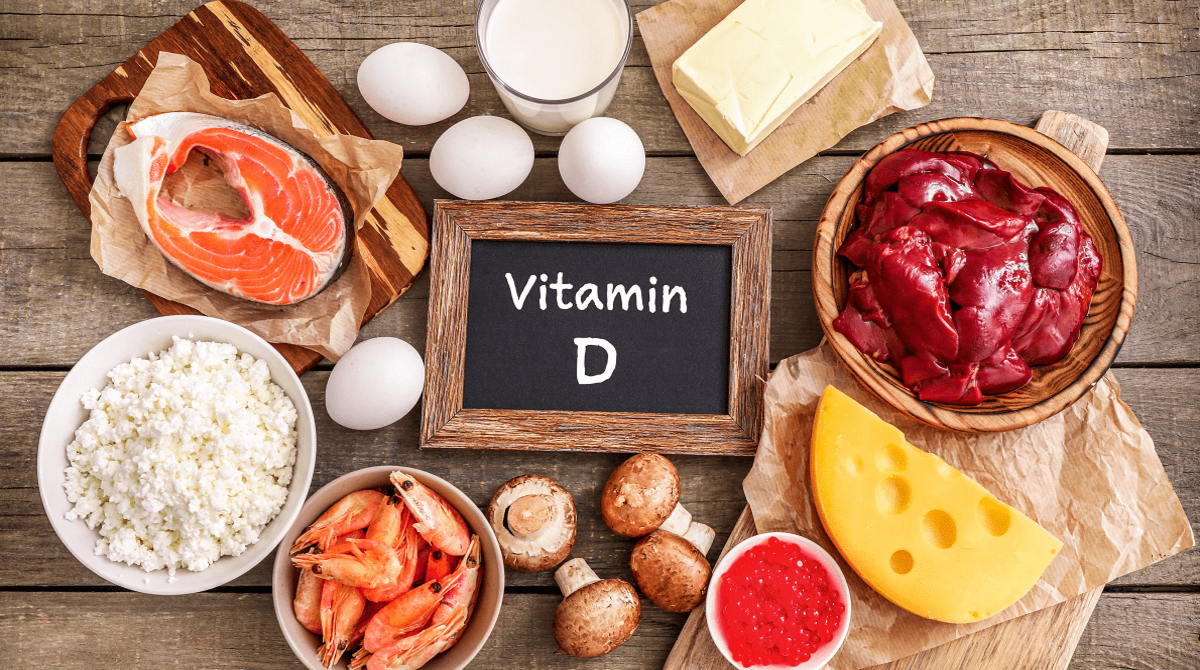Vitamin D: Everything You Need to Know About This Sunshine Vitamin
July 13, 2022

Vitamin D is produced by your body after exposure to the sun. This vitamin exists in two forms:
Vitamin D2: Found in sun-exposed mushrooms, plants, and yeasts
Vitamin D3: Present in animal foods such as egg yolk and fatty fish
Vitamin D3 is more efficient in improving the levels of vitamin D as compared to vitamin D2. Let’s understand more about this vitamin.
Vitamin D Benefits
Vitamin D is essential for the absorption of calcium and phosphorus. Other health benefits of this vitamin are:
Maintains immunity
Prevents depression
Supports bone health
Increases strength of upper and lower limbs
Boosts weight loss
Vitamin D Deficiency
Obtaining an adequate amount of vitamin D from diet is difficult and thus exposure to sunlight and consuming foods fortified with vitamin D is essential. Failing to do the same increases the risk of deficiency. The deficiency of vitamin D causes osteoporosis in adults and rickets in children. Some common symptoms of deficiency are:
Weakness and fatigue
Recurrent flu
Back and bone pain
Muscle pain
Low mood
Hair loss
Delayed wound healing
The risk of deficiency is higher in the elderly, breastfed babies, individuals who stay indoors for a longer time, dark skin people, and individuals who have undergone bariatric surgery.
Side-effects of Taking Too Much Vitamin D
Vitamin D toxicity is rare and happens only when a large dose is taken frequently. Some of the symptoms of overdose are:
Confusion
Abdominal pain
Vomiting
Difficulty in concentration
Depression
Drowsiness
High blood pressure

Recommended daily allowance
The recommended dose depends on age and gender and is as mentioned below (Table1):
Table 1: Recommended daily allowance based on age and gender
Age/gender | Recommended daily allowance |
0-12 months | 10 mcg/day |
1-70 years | 15 mcg/day |
>70 years | 20 mcg/day |
Pregnant and lactating women | 20 mcg/day |
Sources of Vitamin D
As mentioned above, sunshine is the major source of vitamin D. Some of the food items that have a high content of vitamin D are:
Cod liver oil
Egg yolk
Mushrooms
Yeast
Fatty fishes such as salmon and tuna
Fortified cereals and dairy products
Vitamin D supplements come in handy in cases of deficiency. Vitamin D3 supplements are more effective as compared to vitamin D2. As the dose of the supplement depends on your blood levels of vitamin D, it is recommended to consult a doctor before consuming it.
Interesting fact:
The body produces vitamin D3 when UVB in sun rays comes in contact with the skin. As individuals with dark skin have greater melanin that provides natural protection from sunlight, they need 3-5 times higher exposure as compared to those with lighter skin to get the same amount of vitamin D!
We have started an A-Z, blog-series on nutrients, covering all your vitals in one place! Write to us at info@labelblind.com if you would like a specific nutrient of interest to be covered, we would love to keep that as our priority!
References:
National Institute of Nutrition. Indian food composition tables

Rashida Vapiwala (Founder at LabelBlind®, Food Label Specialist, Ph.D (Food Science and Nutrition))
Rashida is passionate about solving problems for the food industry using technology. She loves creating tech-led solutions in the space of Nutrition.
